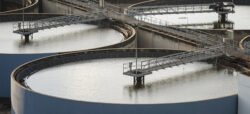Anion Exchange vs GAC: A Comprehensive Guide to Water Treatment Methods
Introduction
The treatment of water, particularly for drinking and industrial purposes, has become increasingly crucial in light of tighter regulatory requirements and rising environmental concerns. As contaminants in municipal and industrial water supplies shift, water treatment methodologies must evolve. Two prominent technologies widely employed for removing anions—charged particles with a negative charge—are Anion Exchange (AE) and Granular Activated Carbon (GAC).
The choice between Anion Exchange vs GAC is not merely academic; it has practical implications for operational efficiency, cost, and regulatory compliance. Understanding the differences, advantages, and limitations of these technologies can significantly impact the effectiveness of a water treatment system. This article presents an in-depth analysis comparing these two methods to assist water treatment professionals—engineers, plant managers, and municipal decision-makers—in making informed decisions.
Understanding the Technologies
What is Anion Exchange?
Anion Exchange is a process that uses ion-exchange resins to remove anions from water. The resins are typically synthetic organic polymers that contain quaternary ammonium groups, which readily attract and bind negatively charged ions like nitrates, phosphates, and sulfates. In a water treatment environment, water passes through columns filled with these resins, facilitating the exchange of unwanted anions for hydroxide ions (OH-), effectively treating the water.
Industry analysis from 2024 indicates that the global anion exchange resin market was valued at approximately $915 million, driven by the increasing demand for deionized water in various sectors, including pharmaceuticals and power generation.
What is Granular Activated Carbon?
Granular Activated Carbon (GAC) is a highly porous material created from carbon-rich sources such as coconut shells or wood. Its extensive surface area and unique adsorption capabilities allow it to effectively capture a wide range of organic and inorganic contaminants, including volatile organic compounds (VOCs), chlorine, and some heavy metals. GAC functions primarily through adsorption—whereby molecules adhere to its surface rather than being chemically exchanged.
According to data from the Water Research Foundation (2023), GAC systems are widely deployed in municipal water treatment facilities, covering approximately 30% of water utilities in the United States.
Comparative Analysis: Anion Exchange vs GAC
Mechanism of Action
1. Target Contaminants
- Anion Exchange: Primarily effective for specific anions like nitrates, arsenates, and sulfates. Its electrochemical basis allows for focused removal of negatively charged species.
- GAC: More versatile in targeting a broader range of contaminants, including organic molecules, chlorine, and certain pathogens.
2. Process Efficiency
- Anion Exchange: Offers higher removal efficiency for specific anions, with some systems achieving over 90% removal rates for target ions. However, the performance is highly dependent on the water’s pH, temperature, and total dissolved solids (TDS).
- GAC: While capable of removing a broader spectrum of contaminants, it may require longer contact times or larger volumes for maximum efficiency, especially for low-concentration pollutants.
Operational Considerations
1. Regeneration and Maintenance
- Anion Exchange: Typically requires occasional regeneration using a brine solution. The frequency can depend on the loading and type of anions in the incoming water. Regeneration can produce waste that requires disposal.
- GAC: May require replacement or reactivation every 1-3 years depending on loading and usage. While reactivation can restore GAC’s effectiveness, it involves additional cost and energy.
2. System Complexity
- Anion Exchange: Systems are generally more complex, requiring precise monitoring and control to maintain optimum performance.
- GAC: Systems are simpler and can often be implemented in modular designs, making them adaptable for various applications.
Economic Considerations
1. Capital and Operational Costs
- Anion Exchange: Initial capital costs can be higher due to the complexity of the equipment. However, operational costs may be lower due to the reduced volume of waste sludge generated.
- GAC: Lower initial setup costs are attractive, but ongoing costs for media replacement and potential costs for additional treatment processes can add up over time.
2. Regulatory Compliance
- Anion Exchange: Can assist in meeting stringent water quality standards laid out by regulations such as the Environmental Protection Agency (EPA) and the Safe Drinking Water Act.
- GAC: Similarly, GAC’s versatile contaminant removal abilities can help utilities meet regulatory requirements, particularly for organic pollutants.
Environmental Impact
1. Waste Generation
- Anion Exchange: Produces brine waste during regeneration, which requires careful handling and disposal to avoid contamination.
- GAC: Although GAC systems produce less chemical waste, spent carbon must be disposed of or reactivated, which can also have environmental implications.
2. Resource Recovery
- Anion Exchange: More efficient in recovering resources, particularly when designed effectively with a focus on recycling.
- GAC: Less efficient for recovering resources, as reactivation may not always be feasible or economical.
Case Studies and Practical Applications
Case Study 1: Anion Exchange in Drinking Water Treatment
In a case study from a municipality facing high nitrate levels, the implementation of Anion Exchange technology resulted in a reduction of nitrate concentrations from 50 mg/L to below 10 mg/L over a six-month operational period. This success facilitated compliance with EPA regulations and significantly improved public health outcomes.
Case Study 2: GAC in Municipal Wastewater Treatment
A municipal wastewater facility utilized GAC filters to treat effluent aiming for reduced organic contaminant levels. Results confirmed a 99% reduction in detectable VOCs, indicating GAC’s effectiveness in not only meeting but exceeding regulatory standards.
Conclusion
As urban water demands intensify and contamination challenges evolve, the choice between Anion Exchange vs GAC will shape the effectiveness and sustainability of water treatment systems. Anion Exchange offers targeted removal efficiency for anions but comes with complexities in system design and maintenance. On the other hand, GAC provides a versatile, simpler approach for addressing a wide variety of water contaminants, although with some caveats regarding long-term operational costs and environmental management.
In selecting the most appropriate technology, water treatment professionals must consider numerous variables, including the specific contaminants of concern, regulatory mandates, cost implications, and environmental responsibilities. Ultimately, knowledge and a tailored approach will enable water treatment facilities to achieve optimal performance and compliance in an increasingly regulated environment.
source https://www.waterandwastewater.com/anion-exchange-vs-gac/

No comments:
Post a Comment